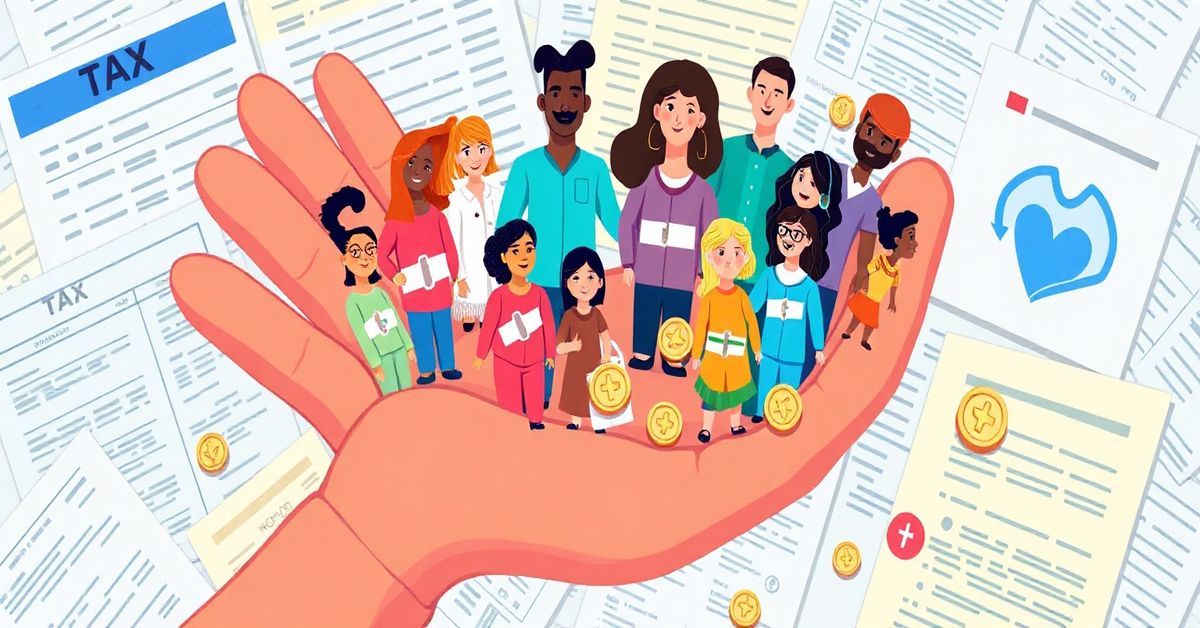Understanding the Shared Responsibility Payment (SRP)
The Shared Responsibility Payment, often called the individual mandate penalty, was a provision within the Affordable Care Act (ACA). It was designed to encourage everyone to have health insurance. The idea was that having more people insured would help lower healthcare costs for everyone. While the penalty has been eliminated, it’s still a useful piece of tax history to understand, especially if you’ve ever wondered why you saw it on old tax returns.
The Roots of the Shared Responsibility Payment
The ACA and the Mandate
The ACA, signed into law in 2010, aimed to make health insurance more affordable and accessible to more Americans. A key part of this law was the “individual mandate,” which required most people to have health insurance that met minimum standards. The Shared Responsibility Payment was the consequence for those who didn’t comply. Think of it like a nudge: the government wanted everyone to have health insurance, and the SRP was the stick to get you there.
Why Was It Necessary?
The individual mandate and its SRP were designed to prevent something called “adverse selection.” That’s when only people who are sick buy health insurance. This would make insurance very expensive because insurance companies would only be paying out benefits, not receiving a balanced mix of payments from healthy individuals. By getting more people, including healthy people, insured, the system works more effectively. It’s kind of like everyone paying a little into a community pot for healthcare, even if they don’t need to use the services themselves at the moment.
How the Shared Responsibility Payment Worked
Who Had to Pay It?
Not everyone had to pay the SRP. If you had health insurance that met the ACA’s “minimum essential coverage” requirements, you were fine. This coverage often came from an employer, a plan purchased through the health insurance marketplace, Medicare, Medicaid, and other forms of health insurance. However, if you did not have this coverage, and didn’t qualify for an exemption, then you would face a fee.
How Was the Payment Calculated?
The SRP was calculated based on your income and family size. It was a bit like doing a mini-tax calculation within your tax return. The penalty had a set flat dollar amount and was also calculated as a percentage of your income, up to a maximum amount. It could get pretty complicated, but essentially, the more you made, the more you might pay. The government published tables every year that showed the exact amounts, which you’d use to determine what you owed on your tax return.
How Was the SRP Collected?
The payment wasn’t a separate bill. It was added to the amount of taxes you owed when you filed your federal income tax return. If you got a refund, your SRP was subtracted from it. If you owed money, it just increased the amount due. This made it a fairly automatic part of filing your taxes, although, for some, it did come as an unpleasant surprise.
Exemptions to the SRP
Some people were exempt from the SRP. There were a variety of reasons you might be exempt from this fee, such as:
- Religious exemptions: Some religious groups didn’t need to carry insurance due to their religious beliefs.
- Hardship exemptions: If you faced certain financial or personal hardships, you could apply for an exemption. This could include homelessness, evictions, or substantial medical debt.
- Low-income exemptions: Those with very low incomes were often exempt. There were income thresholds that, if you were below them, you didn’t have to worry about the payment.
- Short Coverage Gaps: If you had a lapse in coverage of less than 3 months, you were exempt. The goal of this exception was to accommodate transitions between jobs and changes in insurance.
Examples of How the SRP Worked
Scenario 1: The Insured Family
Let’s say a family of four had health insurance through an employer plan for the entire year. They met the minimum essential coverage rules. Because they had the appropriate coverage, they did not have to pay the Shared Responsibility Payment. It didn’t even show up on their tax return in any way. They were in the clear.
Scenario 2: The Uninsured Single Person
Now, imagine a single person who chose not to get health insurance for a whole year. This person did not qualify for an exemption. When filing their taxes, they would have had to calculate their SRP based on their income. They might have been required to pay a certain percentage of their income, up to a maximum dollar amount, as a penalty on their federal tax return. This added to their tax burden for the year.
Scenario 3: The Partially Insured Person
What if a person had a lapse in their health coverage for 4 months in the middle of the year. Since their gap in coverage was more than three months, they would need to pay the SRP for the months they were uninsured. They would need to calculate what their payment would be for the 4 months of the year they were uninsured, and this would be added to their federal tax liability.
Who Was Affected by the SRP?
The SRP primarily affected individuals and families who did not have health insurance that met minimum essential coverage standards, and did not qualify for an exemption. These might have been young, healthy individuals who felt they didn’t need insurance, low-income families who couldn’t afford coverage even with subsidies, or people who were simply unaware of the rules. It was a widespread thing, and at one point, millions of Americans had to pay this penalty.
The End of the Shared Responsibility Payment
The Tax Cuts and Jobs Act
The Tax Cuts and Jobs Act, which was passed in 2017, eliminated the SRP penalty starting in 2019. This means that for 2019 and later tax years, you don’t have to worry about this payment, regardless of whether or not you have health insurance. It is important to note that while the penalty was eliminated, the healthcare mandates in the Affordable Care Act are still in place, though they no longer have a financial penalty associated with them.
Why Was it Eliminated?
The reasons for ending the SRP were largely political. Many people viewed the payment as an unfair burden. Plus, by 2019, health insurance markets had stabilized, and the penalty was considered less necessary. The government felt that they no longer needed to force people into health insurance through the tax system.
Related Concepts and Terms
Minimum Essential Coverage
This refers to the type of health insurance that met the ACA’s standards. If you had this, you were in the clear.
Advanced Premium Tax Credit (APTC)
This is a subsidy that helped people pay for health insurance purchased through the marketplace. Many people used the APTC to help lower their monthly insurance bills.
Health Insurance Marketplace
This is where people could go to compare and purchase health insurance plans under the ACA. It was also often called the “exchange.”
Common Mistakes and Misconceptions
“It’s Just an Extra Tax”
Many people thought of the SRP as just another tax to deal with. But it was designed to be a consequence of not meeting a requirement, not just to collect revenue. It had a purpose beyond simply generating money for the government.
“Everyone Had to Pay It”
Not everyone was subject to the SRP. It only applied to people who didn’t have minimum essential coverage and did not qualify for an exemption.
“It Still Exists”
Many people may still be confused about whether or not they are required to pay this payment. It is important to remember that the SRP was eliminated for 2019 and later.
Key Takeaways
While the Shared Responsibility Payment is no longer in effect, understanding what it was and how it worked is still important, especially if you have old tax returns from those years. It highlights the complexities of health care reform and the ways that it intersects with our tax system. By understanding the SRP, you can better grasp the history and context of healthcare and tax policy in the US.

